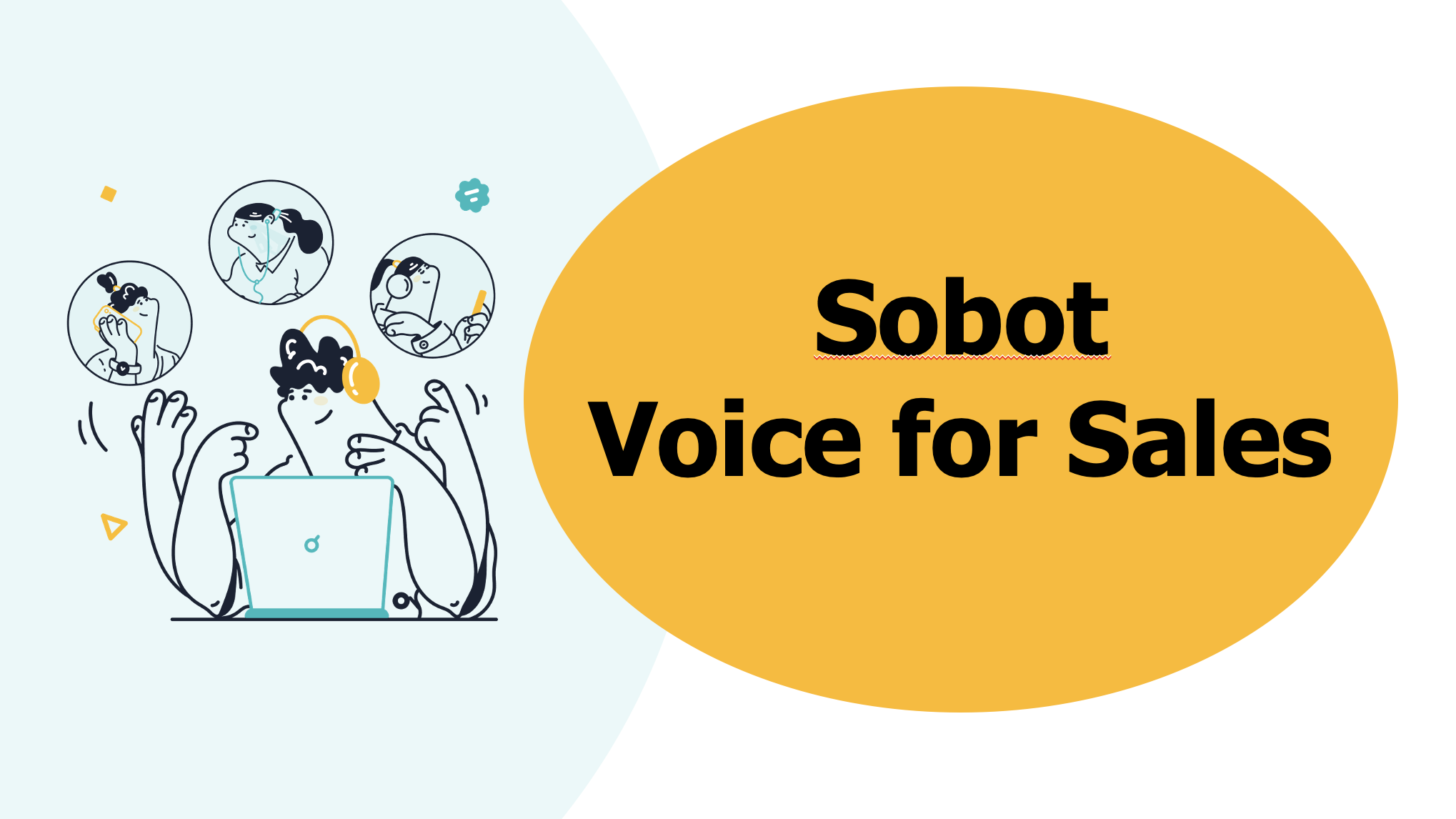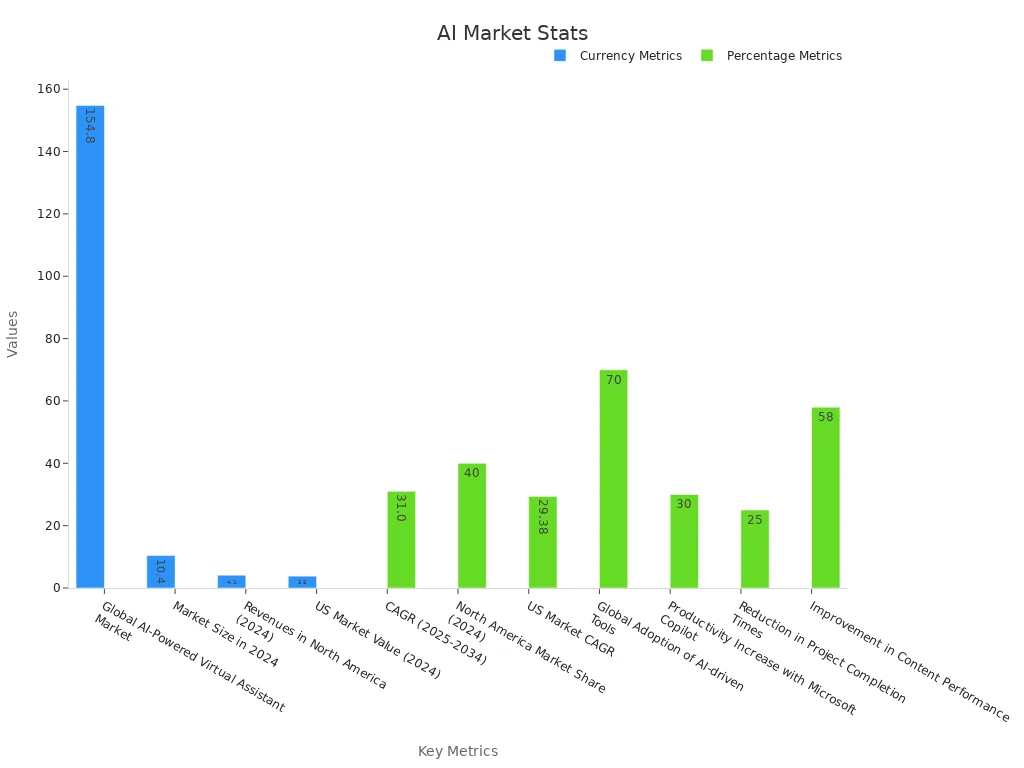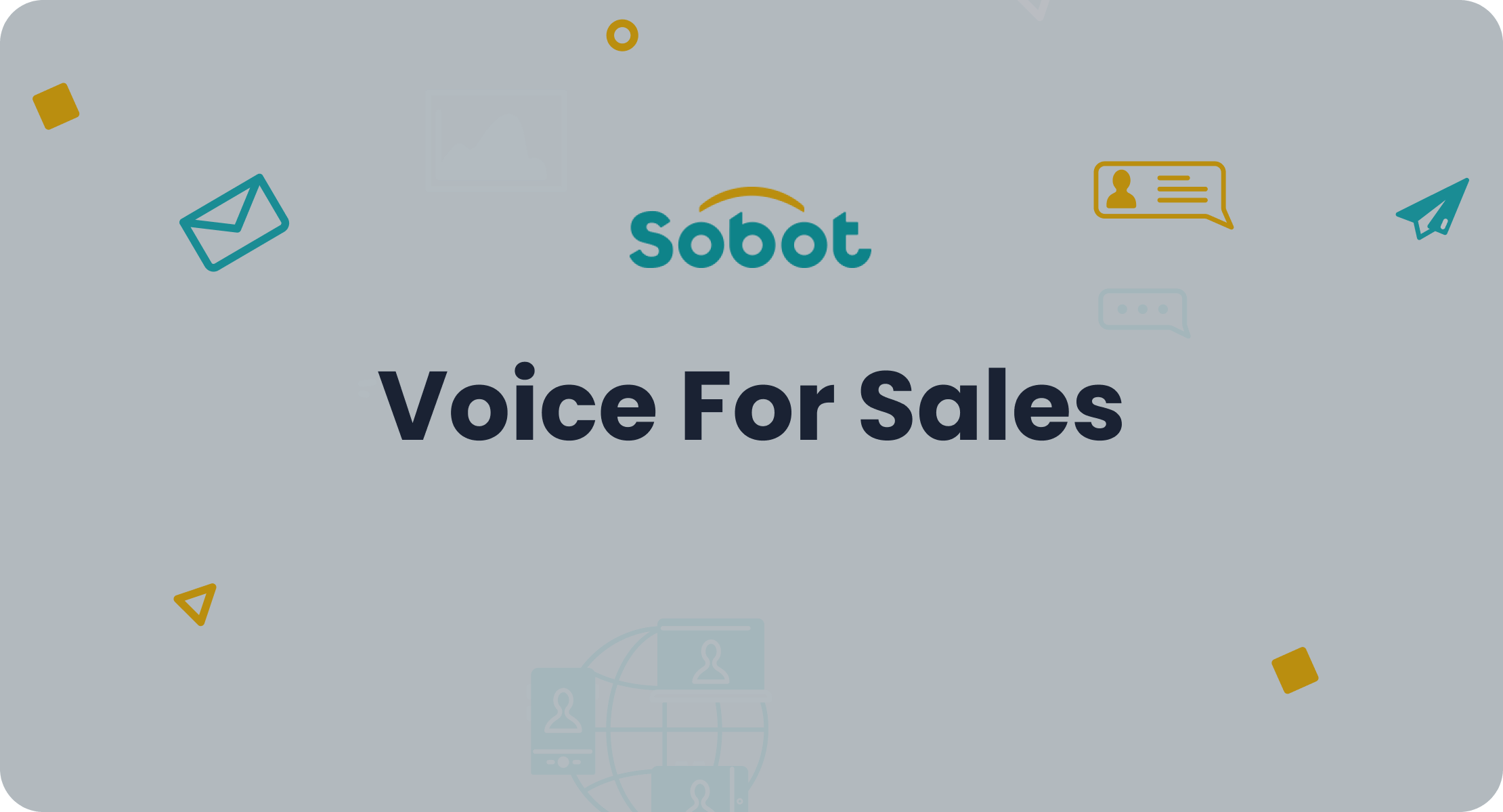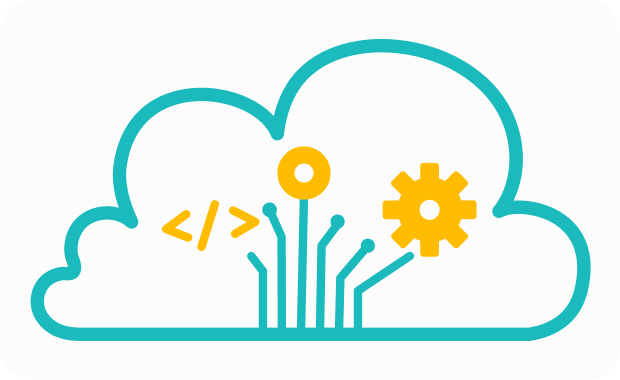Top AI Virtual Sales Assistants for Smarter Selling in 2025

Imagine having a tool that works tirelessly to boost your sales, streamline your processes, and deliver results faster than ever before. That’s exactly what AI virtual sales assistants are doing in 2025. These advanced tools aren’t just making life easier—they’re transforming how you sell. Companies like Sephora have already seen an 11% rise in conversions thanks to AI-driven recommendations, while Yum! Brands cut order mistakes by 20% with AI voice technology.
Take Sobot’s Voice for Sales, for example. It’s designed to supercharge your telesales efforts. From automatic dialing to real-time call monitoring, it helps you close deals faster and smarter. With AI at the core, you can expect more efficiency, fewer errors, and happier customers. The future of sales is here, and you’re invited to be part of it.
What Are AI Virtual Sales Assistants?
Definition and Overview
AI virtual sales assistants are intelligent tools designed to support your sales team by automating repetitive tasks, analyzing data, and enhancing customer interactions. Think of them as your digital sales partners, working tirelessly to help you close deals faster and smarter. These assistants use advanced AI technologies like natural language processing (NLP) and machine learning to understand customer needs, predict behaviors, and provide actionable insights.
The market for AI-powered virtual assistants is booming. By 2034, it’s expected to reach a staggering $154.8 billion, growing at a compound annual growth rate (CAGR) of 31%. In 2024 alone, the market size is projected to hit $10.4 billion, with North America leading the charge at over 40% market share.

Key Features of AI Virtual Sales Assistants
AI sales assistants come packed with features that make your job easier. Here’s what you can expect:
- Automation: They handle tasks like lead qualification, follow-ups, and meeting scheduling, freeing up your time for meaningful conversations.
- Real-time Insights: Tools like Sobot Voice for Sales provide AI-driven call monitoring and keyword spotting to improve your sales strategies.
- Personalization: By analyzing customer data, these assistants tailor interactions to individual preferences, boosting engagement.
- Integration: They seamlessly connect with CRM systems like Salesforce and HubSpot, ensuring no lead slips through the cracks.
For example, tools like Findy and Clay specialize in data scraping and lead generation, while Chorus offers call analytics to refine your sales approach.
Benefits for Sales Teams and Businesses
AI virtual sales assistants bring a host of benefits to your team and business. First, they save time by automating busywork, allowing you to focus on building relationships. They also work 24/7, scaling operations during peak periods without extra costs.
Businesses using AI sales tools report impressive results. According to Harvard Business Review, companies have increased leads by 50% while cutting call times by 60-70%. AI tools also reduce processing errors by up to 90%, as seen in financial services, and improve productivity by 20-40%.
With Sobot Voice for Sales, for instance, you can double your conversion rates and boost outbound productivity by 79%. It’s not just about selling smarter—it’s about creating a seamless experience for your customers.
Top AI Virtual Sales Assistant Tools in 2025


Sobot Voice for Sales: Revolutionizing Telesales
If you’re looking for a tool that can transform your telesales game, Sobot Voice for Sales is your answer. This platform isn’t just about making calls—it’s about making smarter calls. With features like automatic dialing, real-time call monitoring, and AI-driven insights, it helps you connect with customers faster and more effectively.
Imagine doubling your conversion rates and boosting outbound productivity by 79%. That’s what Sobot Voice for Sales delivers. Its global phone number coverage ensures you can reach customers anywhere, while high-quality caller IDs and local numbers build trust and improve connection rates. Plus, the platform integrates seamlessly with CRM systems like Salesforce and HubSpot in under 30 minutes, so you won’t waste time on setup.
Pro Tip: Use Sobot’s AI-driven call quality monitoring to spot keywords and get real-time warnings during calls. It’s like having a coach in your corner, helping you close deals with confidence.
Sobot Voice for Sales is perfect for sales teams aiming to scale operations without sacrificing quality. Whether you’re managing bulk dialing or tracking lead-to-opportunity conversions, this tool has you covered.
Fireflies.ai: AI for Meetings and Collaboration
Meetings can be a productivity killer, but Fireflies.ai turns them into a goldmine of actionable insights. This AI-powered assistant automates note-taking, transcription, and collaboration, so you can focus on what matters—closing deals.
Did you know that 92% of workers multitask during meetings, yet only 2% are actually good at it? Fireflies solves this problem with over 90% transcription accuracy, depending on audio quality. It’s trusted by more than 10 million users across platforms like Zoom and Microsoft Teams.

With Fireflies, you’ll never miss a detail. It captures every word, organizes it into searchable notes, and even highlights key moments. This makes follow-ups a breeze and ensures your team stays aligned.
Note: Fireflies.ai is ideal for sales teams juggling multiple meetings. It saves time, reduces errors, and keeps everyone on the same page.
Salesforce Agentforce 2.0: Smarter Sales Management
Salesforce Agentforce 2.0 takes sales management to the next level. This AI sales assistant automates repetitive tasks, suggests smart next steps, and even logs tasks automatically. You’ll spend less time on admin work and more time closing deals.
Here’s what makes Agentforce 2.0 stand out:
- Automates lead follow-ups with AI-suggested actions.
- Reduces data entry workload by over 60%.
- Responds to customers in minutes, not hours, thanks to AI-assisted replies.
- Creates clean, contextual logs post-call, so you never lose track of important details.
| Metric | Description |
|---|---|
| Automation Features | Reduces manual effort for everyday operations. |
| Lead Follow-Up | Helps reps focus on closing deals with smart reminders. |
| Customer Response Time | Speeds up replies, improving customer satisfaction. |
| Managerial Insights | Real-time dashboards for precise team management. |
Agentforce 2.0 runs entirely within Salesforce, eliminating the need for external systems. Its upgraded Atlas Reasoning Engine handles complex queries, while Tableau integration provides actionable insights for smarter decision-making.
Tip: Use Agentforce 2.0’s real-time dashboards to track team performance and identify areas for improvement.
Groove: AI-Powered Sales Productivity
Groove is a game-changer when it comes to boosting your sales productivity. Designed specifically for teams using Salesforce, this AI-powered platform helps you streamline workflows, automate repetitive tasks, and focus on what truly matters—closing deals.
What makes Groove stand out? It’s all about simplicity and efficiency. The platform eliminates the need for manual data entry by automatically syncing emails, calls, and meetings with Salesforce. This means you can spend less time on admin work and more time building relationships with your prospects.
Here’s what Groove brings to the table:
- Automated Workflows: Groove’s AI handles routine tasks like follow-ups and meeting scheduling, so you don’t have to.
- Salesforce Integration: It’s built to work seamlessly with Salesforce, ensuring your data stays accurate and up-to-date.
- Actionable Insights: Groove provides real-time analytics to help you identify what’s working and where you can improve.
Imagine this: You’re juggling multiple deals, and Groove steps in to prioritize your tasks, send reminders, and even suggest the best times to reach out to prospects. It’s like having a personal assistant dedicated to your sales success.
Tip: Use Groove’s analytics to track your email engagement rates. You’ll know exactly which messages resonate with your audience, helping you refine your approach.
Groove is one of the best AI sales assistants for teams looking to scale without sacrificing quality. Its user-friendly interface and robust features make it a favorite among sales professionals.
Reply.io: Automating Sales Outreach
If you’ve ever wished for a tool that could handle your sales outreach while you focus on closing deals, Reply.io is here to make that dream a reality. This AI sales assistant specializes in automated outreach, helping you connect with prospects at the right time with the right message.
Reply.io’s AI SDR tool takes personalization to the next level. It uses adaptive sequences and real-time data integration to tailor your outreach efforts. This ensures every email or call feels relevant and timely, increasing your chances of engagement.
Here’s why Reply.io is a must-have:
- Personalized Outreach: The AI crafts messages that resonate with your prospects, making them more likely to respond.
- Adaptive Sequences: It adjusts your outreach strategy based on real-time data, ensuring you stay ahead of the curve.
- Scalable Solutions: Whether you’re a small team or a large enterprise, Reply.io grows with you.
Statistics show that effective email automation can significantly boost engagement and conversion rates. One user even reported a 20-30% monthly growth in targeted outreach using Reply.io. That’s the power of AI-driven automation.
Pro Tip: Combine Reply.io with a CRM like Sobot Voice for Sales to create a seamless sales pipeline. You’ll have all your data in one place, making it easier to track and optimize your efforts.
Reply.io is one of the best AI agents for sales teams looking to enhance their outreach strategies. Its ability to automate and personalize at scale makes it a standout choice in the world of AI sales assistants.
Features and Use Cases of Leading AI Sales Tools
Automation and Workflow Optimization
Imagine cutting your sales cycle by nearly a third while doubling your lead generation speed. That’s the power of automation in AI sales tools. These tools handle repetitive tasks like scheduling, follow-ups, and lead qualification, freeing you to focus on closing deals. For example, Sobot Voice for Sales automates outbound calls with bulk dialing and task management, ensuring no lead slips through the cracks.
Here’s what automation can achieve:
| Metric | Value |
|---|---|
| Increase in sales productivity | 30% |
| Lead generation speed | 2-3x faster |
| Shorter sales cycles | 20-30% shorter |
| Cost savings | Up to 25% lower customer acquisition costs |
| Revenue growth | 25% increase in sales-ready leads |
With AI-powered workflows, you can boost your pipeline and reduce costs simultaneously. It’s like having a personal assistant who never takes a break.
Personalized Customer Engagement
AI sales assistants excel at making every interaction feel personal. They analyze customer data to craft tailored experiences, whether it’s through personalized messaging or AI-powered recommendations. For instance, Sobot’s AI solutions use real-time analytics to adapt conversations on the fly, ensuring your customers feel heard and valued.
Here are some ways AI personalizes at scale:
- Personalized Product Recommendations: Suggests items based on customer preferences.
- AI-Powered Chatbots: Offers 24/7 support with human-like interactions.
- Predictive Personalization: Anticipates customer needs using historical data.
Companies like Starbucks have seen success with predictive personalization, offering app users drinks based on their purchase history. This level of engagement builds trust and drives loyalty.
Predictive Analytics and Insights
AI-driven insights take the guesswork out of sales. By analyzing historical data, AI sales assistants can predict future trends and customer behaviors. This helps you focus on high-intent leads and allocate resources effectively.
For example, AI-driven prospecting identifies patterns in customer interactions, enabling you to prioritize leads with the highest potential. Tools like Sobot Voice for Sales provide real-time insights during calls, helping you adjust your pitch and close deals faster.
Here’s how predictive analytics works:
- AI models learn from past data to forecast future outcomes.
- They identify patterns in customer behavior to predict buying trends.
- Insights help you refine strategies and improve decision-making.
With AI-powered sales support, you’re not just reacting to data—you’re staying ahead of the curve.
Integration with CRM and Sales Platforms
Imagine having all your sales data in one place, accessible at the click of a button. That’s the magic of integrating AI sales tools with CRM platforms. These integrations don’t just simplify your workflow—they supercharge your sales automation efforts, helping you close deals faster and smarter.
When AI sales tools connect with CRMs like Salesforce or HubSpot, they create a seamless pipeline for managing leads, tracking customer interactions, and analyzing performance. For example, Sobot Voice for Sales integrates with popular CRMs in under 30 minutes, ensuring your team spends less time on setup and more time selling. This integration allows you to monitor calls, automate follow-ups, and even analyze conversion rates—all within your CRM dashboard.
The benefits of these integrations are undeniable. Businesses report a 15% improvement in win rates and a 34% boost in productivity. Revenue growth jumps by 8%, while sales automation powered by CRMs increases sales by 29%.
| Metric | Improvement |
|---|---|
| Win Rates | 15% Better |
| Revenue Growth | 8% |
| Productivity | 34% Higher |
| Sales Boost from CRMs | 29% |

These numbers aren’t just statistics—they’re proof of how AI sales tools transform your sales process. Imagine using Sobot Voice for Sales to automatically sync call data with your CRM, giving you real-time insights into customer behavior. This kind of integration doesn’t just save time; it helps you make smarter decisions.
Tip: Use AI-driven insights from your CRM to prioritize high-value leads. You’ll spend less time chasing cold prospects and more time closing deals that matter.
Whether you’re a small business or a global enterprise, integrating AI sales tools with your CRM is a game-changer. It’s not just about efficiency—it’s about creating a sales strategy that works for you.
Comparison Table of the Best AI Sales Assistants

Key Metrics for Comparison
When choosing the best AI sales tools, you need to focus on metrics that directly impact your team's efficiency and customer satisfaction. Here's a quick comparison of key metrics to help you decide:
| Metric | Description | Importance |
|---|---|---|
| Response Time | Measures how quickly the assistant responds to queries. | Crucial for maintaining engagement and efficiency. |
| Accuracy | Reflects the assistant's ability to execute tasks correctly, like scheduling or data retrieval. | Essential for precision in sales operations. |
| Customer Satisfaction | Gauges user experience based on reviews and ratings. | Indicates reliability and ease of use. |
| Adaptability | Assesses how well the assistant learns and improves over time. | Important for dynamic environments. |
| Sales Effectiveness | Evaluates conversion rates and sales generated through interactions. | Directly impacts revenue growth. |
For example, Sobot Voice for Sales excels in response time and accuracy, thanks to its AI-driven call monitoring and real-time analytics. It’s designed to help you close deals faster while maintaining high customer satisfaction.
Pricing and Scalability
Pricing and scalability are critical when evaluating AI sales tools. You want a solution that fits your budget and grows with your team. Here’s what to consider:
- Look at the total cost of ownership, including training, upgrades, and integrations.
- Prioritize tools that address your most pressing challenges first.
- Check for scalable plans that allow you to add features or users as your team expands.
- Ensure the tool supports add-ons, API access, or custom workflows for flexibility.
Sobot Voice for Sales offers scalable pricing tiers tailored to businesses of all sizes. Its seamless integration with CRM systems like Salesforce ensures you won’t need costly additional software. Plus, its global reach and AI-driven insights make it a cost-effective choice for scaling operations.
Ease of Use and Customization
Ease of use and customization can make or break your experience with AI sales tools. You need a platform that’s intuitive and adaptable to your unique needs.
Here’s what to look for:
- User-Friendly Interface: Tools like Sobot Voice for Sales simplify onboarding with quick training sessions.
- Customizable Features: Ensure the platform lets you tailor workflows, dashboards, and reports to match your sales strategy.
- Integration Capabilities: Choose tools that connect seamlessly with your existing systems, like CRMs or ERP platforms.
Sobot Voice for Sales stands out with its drag-and-drop IVR and customizable call routing rules. You can deploy it in under a week, and its open API allows for deep integration with your current tech stack. This makes it perfect for teams looking to optimize workflows without a steep learning curve.
Pro Tip: Test customization options during the trial period to ensure the tool aligns with your sales intelligence goals.
How to Choose the Right AI Virtual Sales Assistant
Assessing Your Team’s Needs
Choosing the right AI sales assistant starts with understanding your team’s unique requirements. What challenges are slowing down your sales process? Are repetitive tasks eating up valuable time? Pinpointing these pain points helps you identify the features your team needs most.
Metrics like customer satisfaction scores (CSAT), Net Promoter Scores (NPS), and resolution rates can guide your decision. For example, if your team struggles with response times, an AI-powered email assistant might be the solution. Similarly, if lead qualification is a bottleneck, tools like Sobot Voice for Sales can automate outbound calls and boost your pipeline.
| Metric Type | Description |
|---|---|
| Customer Experience Metrics | Response times, CSAT, NPS, and resolution rates reflect service quality improvements. |
| Operational Efficiency | Automation rates, time saved per task, and error reduction highlight productivity gains. |
| Business Growth & ROI | Revenue increases and cost reductions showcase the financial impact of AI tools. |
By analyzing these metrics, you’ll uncover areas where AI can make the biggest difference.
Evaluating Integration Capabilities
Integration is key to ensuring your AI sales assistant works seamlessly with your existing systems. Look for tools that connect effortlessly with your CRM or ERP platforms. For instance, Sobot Voice for Sales integrates with Salesforce and HubSpot in under 30 minutes, letting you focus on selling instead of setup.
Here’s a quick comparison of integration capabilities:
| Tool | Integration Capability Description |
|---|---|
| Salesforce AI | Uses advanced analytics to identify areas for improvement and streamline workflows. |
| HubSpot Sales | Provides customizable evaluation criteria to enhance sales processes. |
| Zoho CRM | Consolidates customer data and offers real-time insights for better decision-making. |
| Gong.io | Delivers objective metrics for performance assessment through advanced analytics. |
| Chorus.ai | Captures insights from sales conversations to refine strategies and improve outcomes. |
When evaluating integration, prioritize tools that simplify workflows and provide real-time insights. This ensures your team can personalize at scale and focus on high-intent leads without disruptions.
Considering Budget and ROI
Budget plays a big role in your decision. You want an AI sales assistant that delivers value without breaking the bank. Start by analyzing the cost-benefit ratio. For example, a global bank prioritized fraud detection over marketing analytics after calculating higher financial benefits from reduced fraud losses.
Here’s how to assess ROI:
- Compare upfront costs with long-term savings.
- Evaluate productivity gains, such as time saved on lead generation and automated outreach.
- Factor in revenue growth from improved sales outreach and qualification processes.
Sobot Voice for Sales offers scalable pricing tiers, making it accessible for businesses of all sizes. With features like real-time insights and bulk dialing, it helps you boost your pipeline while keeping costs low. Almost 90% of sales teams using Sobot achieve ROI within six months, proving its financial sustainability.
Tip: Prioritize tools that align with your budget and deliver measurable results quickly.
Testing and Trial Periods
Before committing to an AI virtual sales assistant, testing it during a trial period is essential. This step lets you evaluate its features, usability, and overall impact on your sales process. Think of it as a test drive for your sales team. You wouldn’t buy a car without knowing how it handles, right?
Here’s how you can make the most of a trial period:
- Set Clear Goals: Define what you want to achieve. Are you looking to improve response times, automate workflows, or boost conversion rates?
- Test Key Features: Focus on the features that matter most to your team. For example, Sobot Voice for Sales offers automatic dialing and real-time call monitoring. Use these tools to see how they enhance your outbound efforts.
- Monitor Performance Metrics: Track metrics like lead conversion rates, customer satisfaction scores, and time saved on repetitive tasks. These numbers will show whether the tool delivers value.
Pro Tip: During the trial, involve your team in testing. Their feedback will help you understand how the tool fits into your workflow.
| Trial Checklist | Why It Matters |
|---|---|
| Set Goals | Helps you measure success effectively. |
| Test Features | Ensures the tool meets your specific needs. |
| Monitor Metrics | Provides data to justify your investment. |
| Gather Team Feedback | Ensures the tool is user-friendly and aligns with your workflow. |
Sobot makes trial periods simple. Its Voice for Sales platform deploys in under a week, and most teams achieve ROI within six months. You can integrate it with CRM systems like Salesforce in just 30 minutes, saving time and effort.
Testing isn’t just about finding flaws—it’s about discovering how the tool can transform your sales strategy. Use the trial period to explore its potential and see how it fits into your team’s daily operations. With tools like Sobot Voice for Sales, you’ll know you’re making the right choice.
AI virtual sales assistants are reshaping the way businesses approach sales in 2025. These tools don’t just save time—they amplify your team’s efficiency, boost conversion rates, and create personalized experiences that customers love. With solutions like Sobot Voice for Sales, you can automate outbound calls, monitor conversations in real-time, and double your conversion rates.
The future of AI in sales looks even brighter. You’ll see assistants with multimodal interfaces combining voice, text, and visuals. Emotional intelligence will allow them to respond empathetically, while proactive models will predict customer needs before they arise. Organizations already report up to a 60% increase in qualified leads and faster response times that drive higher conversions.
AI virtual sales assistants aren’t just tools—they’re your partners in smarter selling. As technology evolves, these assistants will continue to redefine what’s possible in sales. Are you ready to embrace the future?
FAQ
What is an AI virtual sales assistant?
An AI virtual sales assistant is a smart tool that helps you automate repetitive tasks, analyze customer data, and improve sales interactions. For example, Sobot Voice for Sales uses AI to monitor calls in real time, helping you close deals faster and more effectively.
How does Sobot Voice for Sales improve telesales?
Sobot Voice for Sales boosts telesales by automating outbound calls, providing AI-driven insights, and integrating seamlessly with CRMs like Salesforce. It helps you double conversion rates and increase productivity by 79%, making your sales process faster and more efficient.
Can AI sales assistants work with my existing CRM?
Yes! Most AI sales assistants, including Sobot Voice for Sales, integrate easily with popular CRMs like Salesforce and HubSpot. This ensures all your sales data stays organized and accessible, helping you streamline workflows and focus on closing deals.
Are AI sales assistants expensive?
AI sales assistants come in various pricing tiers to fit different budgets. For instance, Sobot Voice for Sales offers scalable plans, ensuring businesses of all sizes can afford its features. Plus, most teams see ROI within six months, making it a cost-effective investment.
How quickly can I deploy Sobot Voice for Sales?
You can deploy Sobot Voice for Sales in under a week. Its user-friendly interface and quick CRM integration (under 30 minutes) mean your team can start using it almost immediately, saving time and boosting productivity.
See Also
Enhancing Efficiency With AI-Driven Customer Service Solutions
Navigating Artificial Intelligence Software For Call Centers
Best 10 AI Solutions For Enterprise Contact Centers
Evaluating AI Solutions For Enterprise Call Centers
Transforming Support With AI-Powered Customer Service Agents
